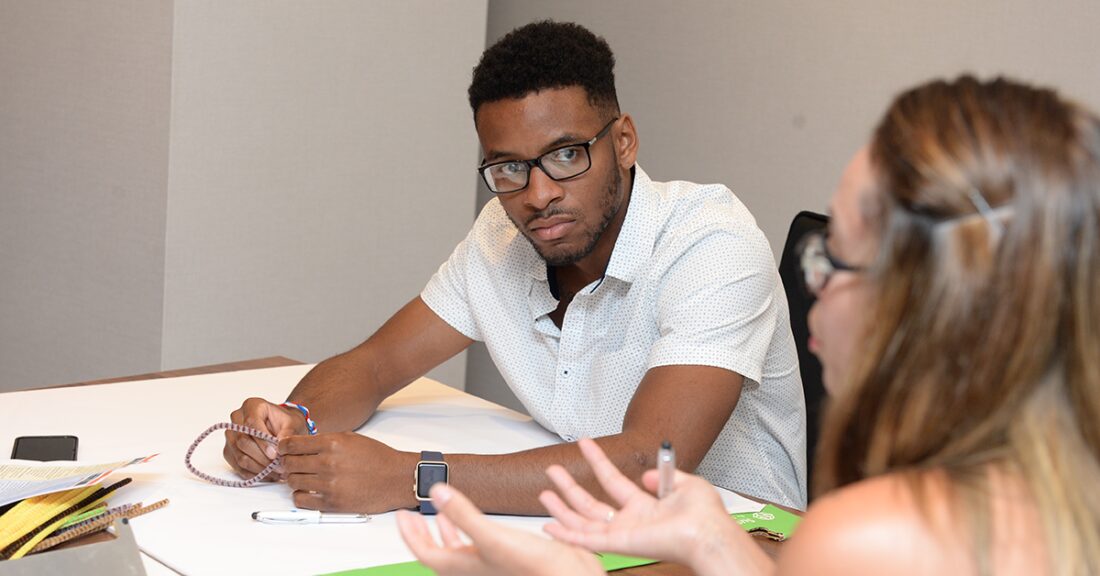Young Leaders Shape Casey’s Latest Results Count Offering

When the Annie E. Casey Foundation set out to create its first leadership development program for emerging professionals, it tapped people of similar age and interests as the program’s target cohort. With the principle of co-creation, or “build with, not for,” in mind, the Foundation engaged a team of 12 — seven young leaders as paid consultants and five younger staff members — to work alongside seasoned curriculum designers and faculty to inform what has become the Rising Leaders for Results Fellowship.
Focusing on Professionals Ages 24 to 31
The young leaders envisioned a fellowship experience that reflected their own early career experiences, ambitions and obstacles. They identified the years between ages 24 and 31 — when many young people are pursuing their first or second career-track roles — as a critical period for professional growth. Rather than simply guess what would resonate with those in more junior positions, the curriculum designers tested, refined and re-tested their assumptions with the seven young leaders during the planning period.
Making Results Count® Work for Emerging Leaders
The target population for the Foundation’s leadership development programs has long been mid-career professionals who have risen to a level of formal authority in nonprofit, philanthropic and public-sector organizations. Emerging leaders are a relatively new audience for the Foundation’s leadership development work, which uses a competency-based approach called Results Count.
Many, but not all, aspects of Results Count work for both emerging and established leaders. With this knowledge, the young co-designers recommended adding skill-building related to self-advocacy in professional settings and taking an entrepreneurial approach to one’s career progression. The curriculum designers agreed that competence in this area would accelerate the Fellows’ effectiveness — now and over the arc of their careers — and added it to the curriculum.
“We felt that giving young professionals the tools to negotiate their way into spaces and confidently say, ‘This is what I need to get results,’ can greatly improve their ability to drive change and yield results,” says Eddye Vanderkwaak, a Jim Casey Fellow and young leader who participated in both the creation and design teams for the Rising Leaders for Results Fellowship.
The young leaders also recommended a “build your own experience” component as an adaptation to the traditional Results Count core curriculum. The wider range in experience and longer-term objectives among the rising leaders informed the group’s decision to integrate individualized leadership development activities into the program.
“A lot of times, these learning opportunities are prepackaged for us, but it’s neat to be given the opportunity to explore and innovate what is of most value to us,” says Vanderkwaak.
The opportunity has resonated with its target audience. More than 370 applications were submitted for the program’s inaugural 14 spots.
Meet the members of the first class of Rising Leaders for Results
A Supportive Network
Casey views the Fellowship as an investment in young people who are still growing into their leadership potential. Accordingly, the Foundation will provide mentorship to the Fellows as well as a newly created Rising Leaders alumni network for all who have completed the program.
“We want to sustain the growth and success of Fellows, especially as they face new challenges,” explains Dana Jackson, a Fellowship faculty member. “[The Fellowship] empowers young leaders to work collaboratively with their organizations and each other to address challenges and promote racial equity in building a brighter future for the families and communities they serve.”
Learn More About the Rising Leaders for Results Fellowship






